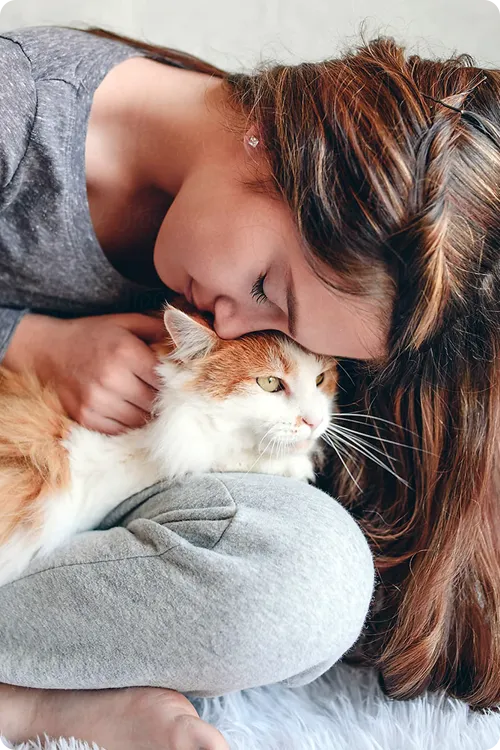What is hip dysplasia, and can my pet get coverage?
Hip dysplasia is a genetic disorder in which the ball and socket of the pet’s hip joint do not properly develop, and they fit together loosely. This can cause chronic pain and result in lameness. Hip dysplasia is one of the most common musculoskeletal conditions afflicting pets, and as such, it’s always important to know upfront if your pet insurance covers it.
Understanding hip dysplasia in dogs
Canine hip dysplasia can happen to any size or breed of dog and this painful condition can drastically reduce a dog’s quality of life. Although hip dysplasia is often viewed as a cause of osteoarthritis in older dogs, the disease actually begins in puppyhood. The underlying abnormality is laxity of the hip joint which results in instability. This instability, in turn, leads to progressive degeneration of the joint and clinical signs of osteoarthritis.
Puppies with a genetic predisposition are born with normal hips, but changes begin within a few weeks of birth. In some cases, lameness and gait abnormalities begin as early as 3 months of age, while other dogs may not exhibit signs for years.
Not all cases of hip dysplasia can be prevented. However, there are some steps you can take to reduce your dog’s risk of developing this disease. Keeping your dog’s skeletal system healthy should start when your dog is young. Feeding your puppy an appropriate diet will give them a head start on healthy bone and joint development and help prevent the excessive growth that leads to the disease.
What dog breeds get hip dysplasia?
All dogs can get this condition, which is why pet insurance that covers hip dysplasia is imperative. However, larger dog breeds may be particularly predisposed, and your dog’s genetics can contribute to their likelihood of being diagnosed with hip dysplasia at some point in their lifetime.
Some of the breeds most at risk of hip dysplasia are:
- German Shepherd
- Labrador Retriever
- Golden Retriever
- Great Dane
- Saint Bernard
- Mastiff
Even so, it’s important to realize that smaller dogs and even cats can also be affected by hip dysplasia. For example, Pugs and Corgis are also closely associated with the condition.
Can cats get hip dysplasia?
Fortunately, hip dysplasia is rarer in cats than in dogs, and many cats with hip dysplasia may never show clinical signs. Researchers suspect this is because cats are better at compensating for hind limb lameness and hiding their pain. It is still important to be aware of the condition, especially if you have a purebred cat. Some purebreds have a higher risk for dysplasia.
Hip dysplasia is considered an inherited condition for cats and is more common in Maine Coons, Persians, Himalayans, and Siberians. Though hip dysplasia in cats is generally considered to be caused by genetics, some underlying factors can predispose a cat to develop the condition such as obesity and orthopedic issues.
While hip dysplasia is uncommon in cats, most cats do well with weight management, joint supplements, and pain control. Hip dysplasia often does not dramatically shorten a cat’s life expectancy unless they are born with genetically severe abnormal conformation in their hips.
Cat breeds at risk of hip dysplasia
Because the prevalence of hip dysplasia in cats is lower than the condition in dogs, there is not as much information available as to which breeds are most at risk. That said, the condition has been found to be more common in purebred and longer-haired cat breeds, such as Himalayans, Persians, Maine Coons, American Bobtails, and Norwegian Forest cats. A clinical review in the Journal of Feline Medicine and Surgery meanwhile states that reported incidence of hip dysplasia in cats is around 5.8% for Domestic Shorthairs and may be above 20% for certain purebred cat breeds.
Pet insurance that covers hip dysplasia
Trupanion covers hip dysplasia and veterinary care costs associated with the condition at any age in a pet’s life. It’s worth noting that, while an increasing amount of pet insurance companies are covering hip dysplasia, many have age limitations or may impose payout limits on the amount of treatment needed.
What treatments are covered for pet hip dysplasia?
The treatment that will be most beneficial to your pet will depend on the extent of their condition and their overall health. As far as pet insurance coverage for hip dysplasia goes, there are several treatment options available to you with a Trupanion policy. These include:
- Prescription diets or formulas: Recommended by your veterinarian, these can help decrease inflammation and promote cartilage healing.
- Pain medications: NSAIDs (non-steroidal anti-inflammatory drugs) can reduce pain, but only as directed by your veterinarian.
- Acupuncture: Utilized as an ancillary therapy, this may provide additional benefit in some patients. (Specific treatment coverage may vary depending on your location. Learn more about your coverage options by getting a quote or by reaching out to our customer service team, available 24/7/365.)
- Surgery: Various surgical procedures including juvenile pubic symphysiodesis and total hip replacement may be recommended by your veterinarian.
- Total hip replacement: This is an option in dogs with especially severe hip dysplasia.
See how Trupanion’s pet insurance that covers hip dysplasia compares to other companies’ coverage.
If your pet has difficulty walking or seems to be in pain when moving or stretching their hind legs, it could be a sign of hip dysplasia. However, this could also be a sign of many other illnesses or injuries. Like most pet health insurance providers, Trupanion does not cover pre-existing conditions. So, it’s important to get your pet properly diagnosed by their veterinarian and have a complete picture of their health at time of enrollment.
Related questions

Get the care your best friend deserves
From lovable mutts to specific breeds, we provide medical coverage that’s with you from the adorable puppy years to those sweet, sunset moments.
